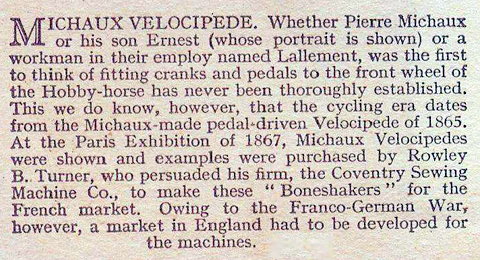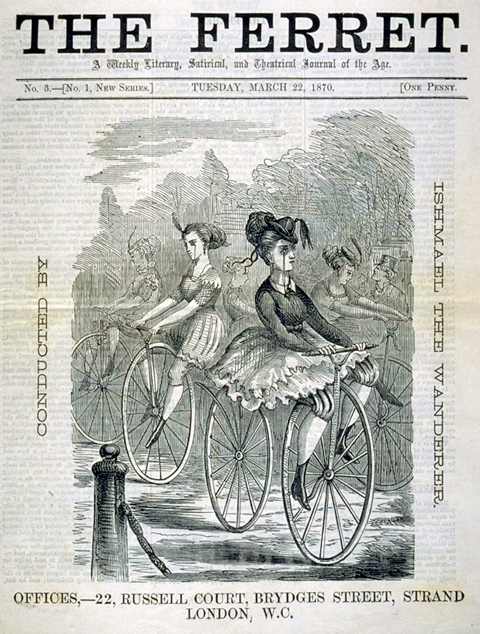
VIVE LE VELOCIPEDE

In France, Ernest Michaux is considered the ‘father of the bicycle.’ He and brother Pierre added cranks and pedals to improve the earlier Draisienne bicycle. 1868-70 was the heyday of the velocipede in France. This novel means of personal transportation caught the public imagination, and blacksmiths, carriage makers and wheelwrights were encouraged to construct either parts for velocipedes or complete machines.
French makers in the period between 1868 and 1870 are renowned for the high standard of velocipedes that came onto the market before the Franco-Prussian War (19 July 1870 – 10 May 1871). That conflict destroyed the new velocipede-building industry in France and production moved to England.
British velocipedes soon outnumbered those from other countries. The International Velocipede and Loco-machine Exhibition at Crystal Palace in September 1869 saw over 200 machines, from Britain, France, Belgium, Germany and America on display.
1869/1870 French Transitional Velocipede
Metal Backbone, with Unique Head
36″ Front Wheel
(Now sold)
The design of this velocipede is unique and it is built to a high standard typical of the French machines. It is considered a ‘transitional’ model because the rear wheel is smaller than the first generation of velocipedes, so its design is part-way between the velocipede and the ordinary (penny farthing).
The design of the head – providing additional strength to this point of stress – is both functional and ornate. I’ve never seen such a detail before. French velocipede builders had a head-start on their British contemporaries, and it is amazing how many variations in style there were in France between 1868 and 1870. French velocipede manufacture stopped in July, 1870 when war broke out between France and Prussia. The British bicycle industry was founded in 1869 and, as a result of the war in France, Coventry took over as the world centre of velocipede construction.
THE DIABLERIES
The ‘diableries’ are a contemporary series of stereoview cards using plasticine to create devilish scenes. You can imagine Victorians in their parlours in the 1860s viewing such images on their stereoscopes in the same way we’d watch TV today. Two of the series feature velocipedes. The first is ‘Course de Vélocipèdes’


The other is ‘Les Pompiers de l’Enfer’ (The Firemen from Hell), below.


FEMALE VELOCIPEDE RIDERS
At first the press did not fully appreciate the achievements of this new machine and what it meant for the future. However, soon everyone started to recognize the importance of this new mode of transport – a velocipede may have been expensive, but it did not need food and stabling like a horse. And it could be used for independent long-distance travel. It required athletic abilities for long journeys, was dangerous down hills, and it scared the living daylight out of other road users and pedestrians …but a velocipede is actually surprisingly reliable. Velocipedes were raced extensively. In France, even women raced velocipedes! Below you can see the first ladies’ velocipede race (Le Monde Illustre, 1st November, 1868).

The American Harper’s Weekly (19th December 1868) covered the story too; but in their illustration, below, the women’s bare legs have been covered!

The weekly satirical magazine The Ferret added to comments of the day. Its cover of March 22nd, 1870, illustrates women riding velocipedes with extremely risque attire.














Le Velocipede Illustre 24 octobre 1869































